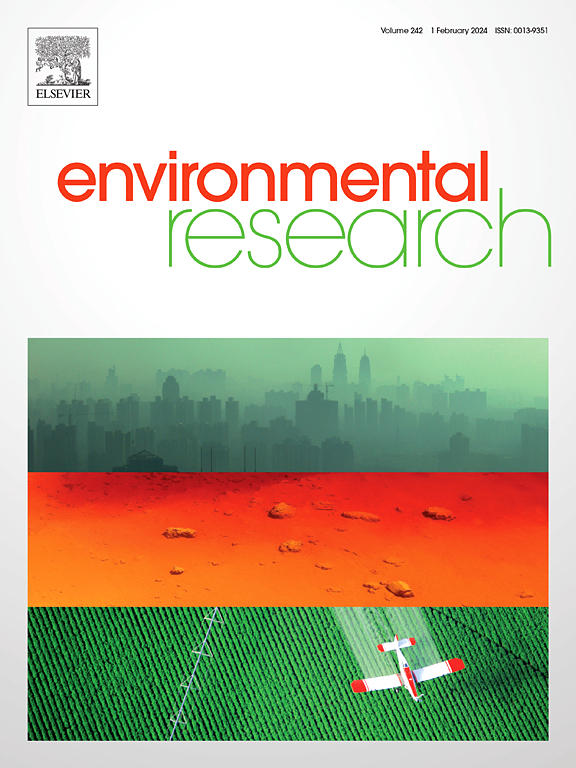Effects of curing methods on microstructure, mechanical properties, and heavy metal immobilization in non-sintered MSWIFA-based lightweight aggregates
IF 7.7
2区 环境科学与生态学
Q1 ENVIRONMENTAL SCIENCES
引用次数: 0
Abstract
With the rapid economic growth and accelerated urbanization, solid waste recycling has become a critical priority for eco-friendly urban development. Although some studies have investigated cold-bonded aggregates using MSWIFA, the effect of curing environments on heavy metal immobilization and mechanical behavior remains poorly understood. This study utilizes solid wastes such as municipal solid waste incineration fly ash (MSWIFA) and carbide slag to produce environmentally friendly non-sintered lightweight aggregates, and the effect of curing temperature and solution on the properties, reaction products as well as heavy metal leaching was investigated. The results show that under steam curing at 60 °C for 12 h, using calcium carbide slag supernatant as the granulation solution, the mechanical strength of the aggregates reached more than 7.02 MPa, meeting the Chinese standards for lightweight aggregates. Steam curing promotes the formation of hydrocalumite minerals, but the peak gradually weakens when the curing temperature reaches 75 °C. Microstructural analysis through XRD, FTIR, SEM, and XPS revealed that high temperatures activated the latent reactivity of slag, accelerating the reactions and promoting the generation of more C-S-H gel and hydrated calcium aluminates. This study proposes an innovative use of MSWIFA and carbide slag to produce non-sintered aggregates and systematically evaluates their performance under various curing conditions. The results are validated by detailed characterization, confirming both the originality and reliability of the work. In conclusion, the non-sintered lightweight aggregates prepared from MSWIFA demonstrate good mechanical performance and environmental adaptability, providing a sustainable alternative to natural aggregates and a useful reference for eco-friendly construction materials.
固化方式对非烧结mswifw轻骨料微观结构、力学性能和重金属固定的影响。
随着经济的快速增长和城市化进程的加快,固体废物的资源化利用已成为生态城市发展的关键问题。尽管一些研究已经使用MSWIFA研究了冷键骨料,但固化环境对重金属固定和力学行为的影响仍然知之甚少。本研究利用城市生活垃圾焚烧飞灰(MSWIFA)和电石渣等固体废弃物制备环保型非烧结轻骨料,考察了固化温度和固化溶液对其性能、反应产物及重金属浸出的影响。结果表明:以电石渣上清液为制粒液,在60℃蒸汽养护12 h下,集料的机械强度达到7.02 MPa以上,符合我国轻质集料标准;蒸汽养护促进了水矾土矿物的形成,但在养护温度达到75℃时,峰值逐渐减弱。XRD、FTIR、SEM和XPS等微观结构分析表明,高温激活了渣的潜在反应活性,加速了反应,促进了更多C-S-H凝胶和水合铝酸钙的生成。本研究提出了利用MSWIFA和电石渣生产非烧结骨料的创新方法,并对其在不同养护条件下的性能进行了系统评价。结果通过详细的表征得到验证,证实了工作的原创性和可靠性。综上所述,MSWIFA制备的非烧结轻骨料具有良好的力学性能和环境适应性,可作为天然骨料的可持续替代品,为环保建筑材料的开发提供有益参考。
本文章由计算机程序翻译,如有差异,请以英文原文为准。
求助全文
约1分钟内获得全文
求助全文
来源期刊

Environmental Research
环境科学-公共卫生、环境卫生与职业卫生
CiteScore
12.60
自引率
8.40%
发文量
2480
审稿时长
4.7 months
期刊介绍:
The Environmental Research journal presents a broad range of interdisciplinary research, focused on addressing worldwide environmental concerns and featuring innovative findings. Our publication strives to explore relevant anthropogenic issues across various environmental sectors, showcasing practical applications in real-life settings.
 求助内容:
求助内容: 应助结果提醒方式:
应助结果提醒方式:


